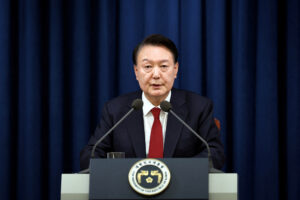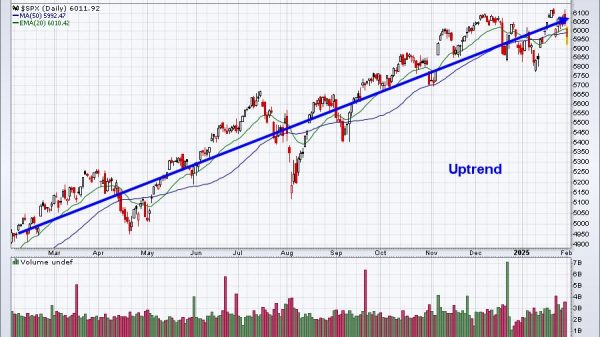Policymakers across Southeast Asia are reaching for both conventional and unconventional instruments available in their toolbox to stem plunging currencies and cool price gains.
While the region’s problems are middling compared to some neighbors in the south, countries face their biggest challenges in decades. The Philippine peso retraced an all-time low this week while the Malaysian ringgit drifted to the weakest in almost 25 years as a stronger dollar ups the risk of imported inflation.
Even Singapore, the only developed economy in the pack, isn’t immune to risks emanating from a dour global outlook.
From monetary tightening to depleting foreign exchange reserves and using open-mouth operations to direct market expectations, central bankers in the region are leaving no tool untouched to restore stability. Some are even letting bond yields rise to arrest capital outflows.
The region’s authorities leaning onto a mix of tools “has served them well so far,” said Priyanka Kishore, an economist at Oxford Economics. “However, it’s becoming increasingly difficult for the central banks to maintain this balance.”
Here’s a closer look at the tools Southeast Asian policymakers have deployed so far:
POLICY TIGHTENING
Singapore, which uses the exchange rate as its main monetary tool, on Friday delivered its fifth tightening since October 2021 — a dateline that also makes it the region’s first to start normalizing policy settings. As regards to rate adjustments, Malaysia was the first to raise its benchmark this year, although the Philippines has raised borrowing costs the most, having moved by 225 basis points so far.
Philippine central bank Governor Felipe M. Medalla on Friday flagged the need for as much as 75 basis-points of increase next month, after a four-decade high US core inflation print dashed hopes of the Federal Reserve slowing its pace of rate hikes next month.
Even State Bank of Vietnam, the last to get off the block in Southeast Asia, hiked by 1 percentage point, following calls from Prime Minister Pham Minh Chinh for measures to support the currency. More increases may be in the cards in the region, with Thailand and Malaysia also set to review rates in November.
RESERVES DROP
Ample foreign exchange reserves built during the pandemic year are acting as buffers, with central banks dipping into their piles to stabilize their currencies. Malaysia, Indonesia and the Philippines’ have depleted their reserves to levels last seen in 2020, while that of Thailand’s slipped to a five-year low, latest data show.
While the decline is due in part to asset revaluation, a strong dollar also puts pressure on authorities to draw from reserves to arrest the drop in their currencies. Philippines’ Mr. Medalla has said the authority is “very active” in the currency market.
Declining reserves may reduce room for more active currency intervention and stabilization, said Chua Hak Bin, an economist at Maybank Investment Banking Group. Still, “intervention can only help stabilize and reduce the volatility of the currency, but will not likely arrest the depreciation trend.”
MORAL SUASION
Communication has emerged as a key tool for central banks to get their monetary policy signals across to markets that have grown increasingly volatile. Thailand is using social media to shed light on its rate decisions, while Indonesia regularly flags when it’s intervening to prop up the rupiah.
The Philippines has also matched its currency interventions with an appeal for investors to refrain from taking “undue advantage” of market conditions, as well as warnings it may tighten documentary requirements for trades. Lenders have responded in kind by saying they would work with the central bank to quash speculation.
RESERVE RATIO
Indonesia has nearly tripled lenders’ reserve requirement ratio, taking it to a record-high 9% in September from just 3.5% at the start of 2022. That’s expected to mop up 375 trillion rupiah ($24.4 billion) in liquidity this year, after embarking on one of the largest quantitative easing programs among emerging markets during the pandemic.
The Philippines also delayed its plan to lower its RRR before year-end in line with a broader goal to reduce it to single digits by mid-2023, saying a cut might confuse the market at a time when it’s seeking to absorb liquidity.
BOND YIELDS
“Operation Twist” is Indonesia’s latest tool to support the rupiah, selling short-tenor government bonds and letting yields rise to lure foreign funds. This has had limited success, though, as risk-averse investors flock to safe havens even though Indonesia’s five-year bond yields are at their highest since 2020.
Some central banks are keeping an eye on economic growth even as they tighten monetary policy. On the flipside of its Operation Twist, Indonesia is buying up long-term debt papers to bring down interest rates for the government. The same push is seen in Vietnam, where policy makers are using open-market operations to keep borrowing costs low while they raise the policy rate. — Bloomberg























